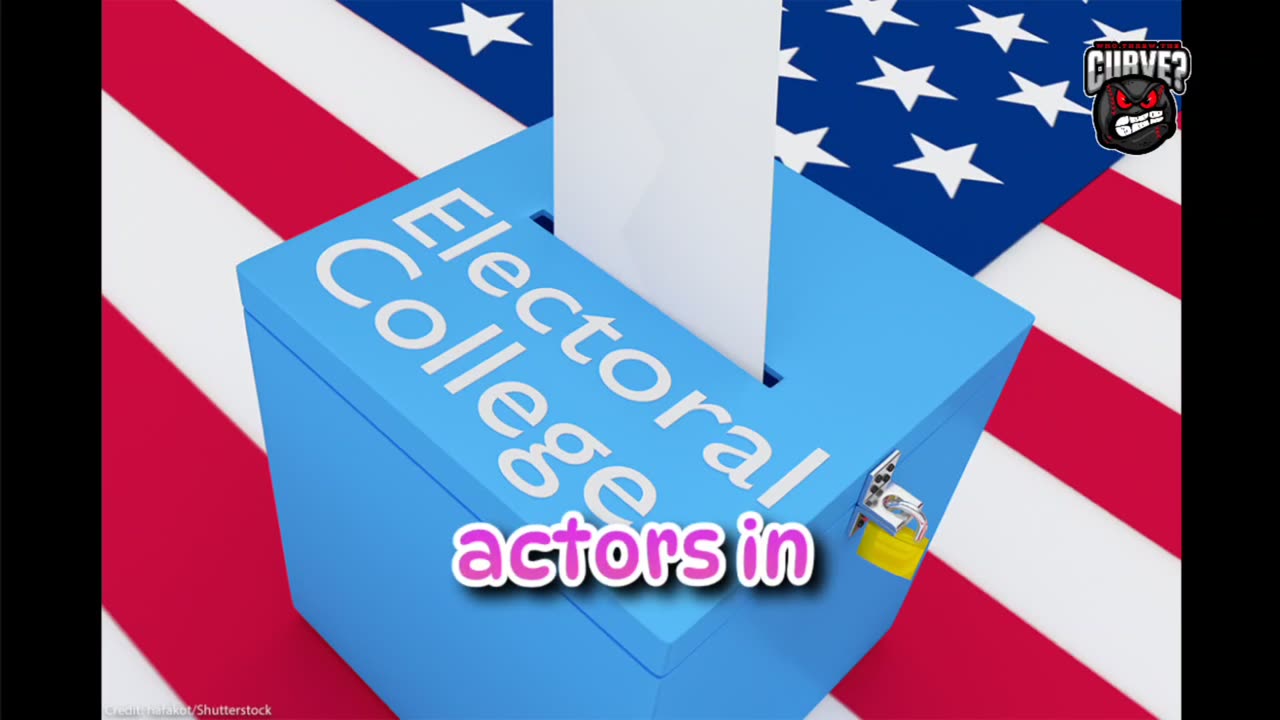Premium Only Content

Electoral College Reform: Saving Federalism or Killing It?
#ElectoralCollegeExplained #FederalismDebate #USPolitics #ConstitutionalCrisis #PoliticalReform #CivicEducation #DemocracyInDanger #StateVsNation #politics
The debate over reforming the Electoral College pivots on whether changes will bolster or erode the federal structure at the heart of American government. Proponents of the status quo argue that the system was deliberately designed to balance state and popular interests, ensuring that smaller states retain meaningful influence in presidential elections. Critics counter that modern realities, demographic shifts, winner-take-all allocations, and occasional mismatches between the popular vote and Electoral College outcomes, undermine democratic legitimacy. Any reform must therefore be judged by its impact on the constitutional equilibrium between national majorities and state sovereignty.
The original design of the Electoral College embeds federalism by allocating each state as many electors as it has representatives in Congress. This arrangement compelled presidential candidates to seek support beyond population centers, giving rural and less populous states real bargaining power on the national stage. By vesting state legislatures with authority to determine elector selection methods, the framers guaranteed that states would remain independent actors in the election process. That safeguard against tyranny of the majority persists in today’s system, preserving a union of semi-sovereign entities rather than a purely centralized nation-wide vote.
Calls to abolish the Electoral College in favor of a direct national popular vote exemplify a shift toward majoritarianism that risks marginalizing state authority. The National Popular Vote Compact, for instance, bypasses the constitutional amendment process by binding member states to award electors to the national popular vote winner. While it promises to prevent “wrong winner” scenarios, it simultaneously concentrates power in densely populated regions and dilutes the bargaining power of smaller states. Such sub-constitutional reform threatens the delicate balance the framers struck between federal and popular rule, potentially sparking constitutional crises when compact-member states diverge on enforcement or interpretation.
Not all reforms undermine federalism, however. Proposals to replace winner-take-all with congressional district allocation of electors continue to vest election procedures in state hands while fostering intra-state representation. Historically, states experimented with district-based elector selection throughout the nineteenth century, reflecting a diversity of federalist practices. By allowing states to tailor allocation methods, whether winner-take-all, district-based, or proportional, reform can enhance voter engagement in every region without eliminating the state’s role as an election authority. This preserves the decentralized spirit of the Constitution even as it modernizes electoral mechanics.
Ultimately, electoral college reform can either reinforce or weaken federalism depending on its design. Wholesale adoption of the national popular vote eclipses state discretion, centralizing authority and diminishing the federal character of presidential elections. In contrast, state-driven innovations, like district allocations or proportional schemes, can invigorate voter participation while maintaining the constitutional framework of shared sovereignty. Strengthening federalism requires reforms that respect the states’ prerogatives rather than bypassing them.
-
 1:45:43
1:45:43
Man in America
10 hours agoThe DISTURBING Truth About Parasites — Live Q&A w/ Dr. Jason Dean
48.7K29 -
 LIVE
LIVE
SpartakusLIVE
7 hours ago#1 Mountain of Muscle with HUGE Legs saves your weekend from complete BOREDOMNight HYPE
697 watching -
 47:42
47:42
Sarah Westall
7 hours agoFreedom or Slavery? AI will Change Everything w/ Trump Senior Advisor Marc Beckman
39.6K7 -
 2:23:20
2:23:20
vivafrei
14 hours agoEp. 285: Visa Revocation No-Go! Sortor Arrested! Ostrich Crisis! 2A Win! Comey Defense & MORE!
103K96 -
 LIVE
LIVE
CassaiyanGaming
5 hours ago🟢LIVE - VISITING GOOB LAGOON! - Will They Rip Me Off?!? Waterpark Simulator
793 watching -
 5:42:21
5:42:21
EricJohnPizzaArtist
6 days agoAwesome Sauce PIZZA ART LIVE Ep. #64: Robbie “The Fire” Bernstein
40.1K2 -
 2:23:58
2:23:58
Nerdrotic
8 hours ago $10.07 earnedDeDunking the Debunkers with Dan Richards | Forbidden Frontier #119
52.6K12 -
 LIVE
LIVE
SlinderPigCamz
5 hours ago $0.79 earnedThe Headliners and other games W/GrinchyGamer101 (Road to 500 Followers)
43 watching -
 LIVE
LIVE
MrOldFart
9 hours ago $2.21 earnedLIVE - MEGABONK First Playthrough - Mr.OldFart
300 watching -
 9:06:53
9:06:53
GritsGG
11 hours agoWarzone Win Grinding! Most Wins in WORLD! 3680+!
79.3K1
